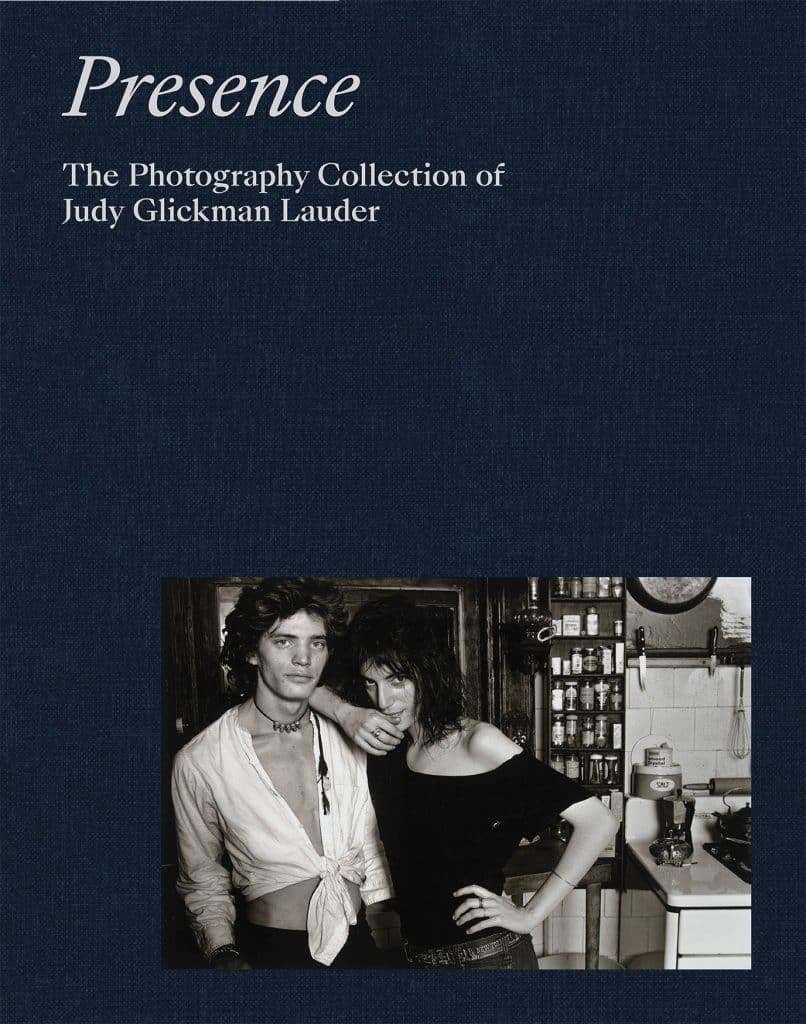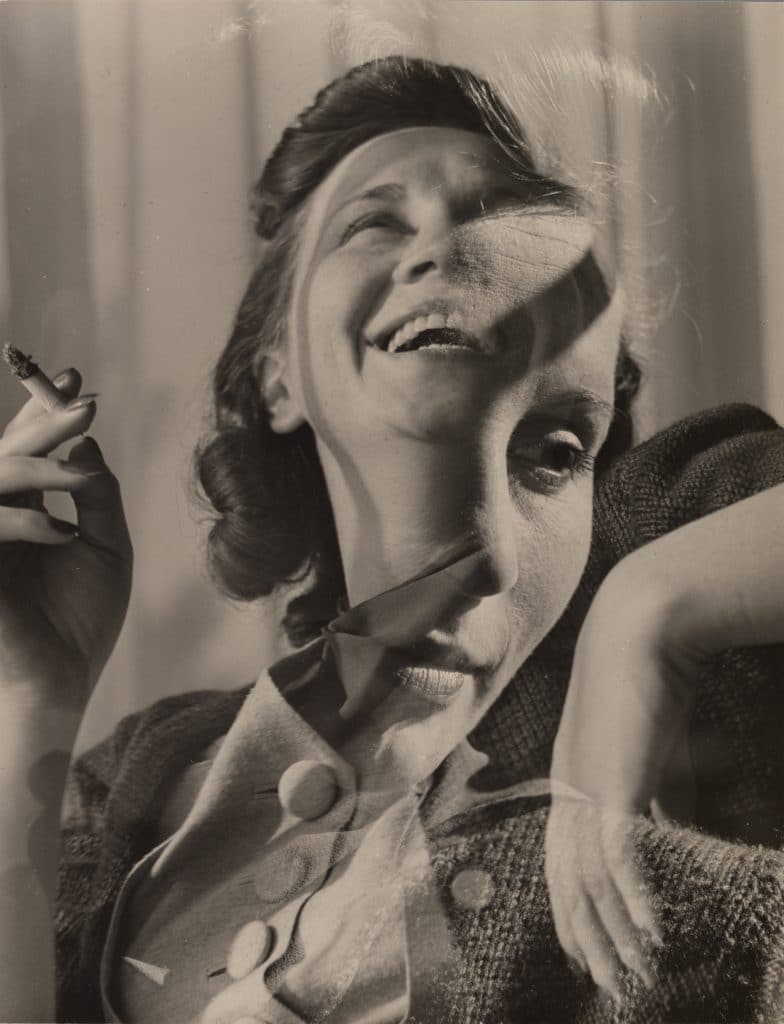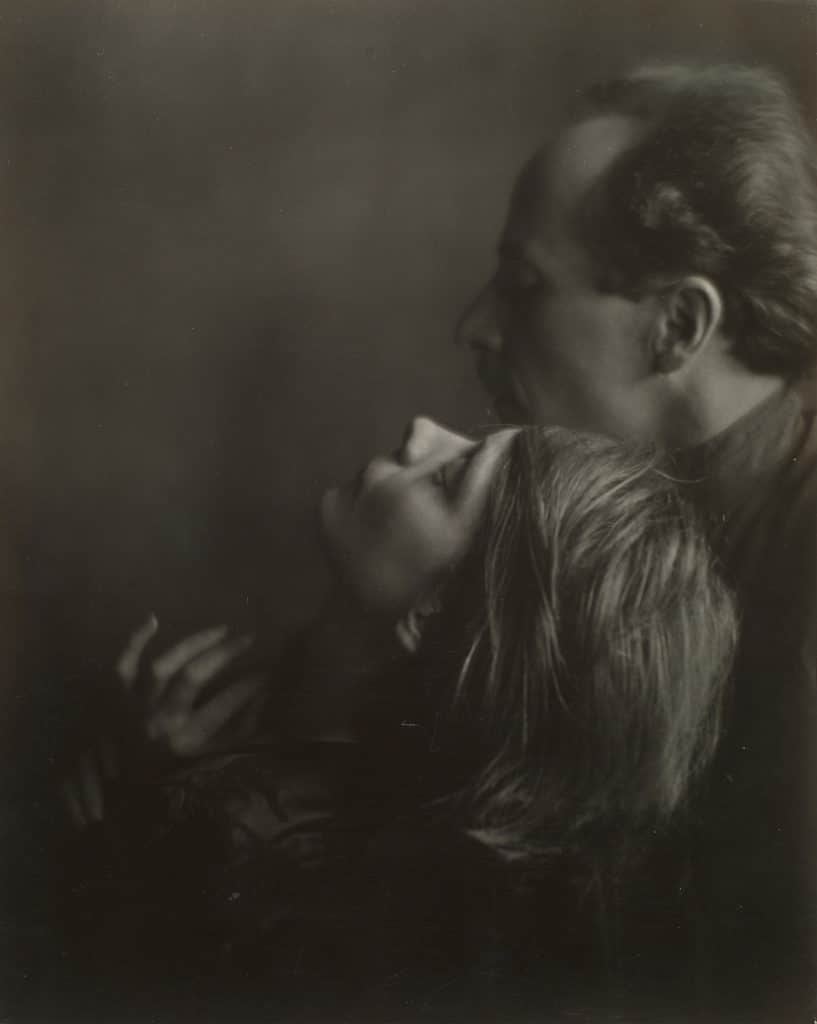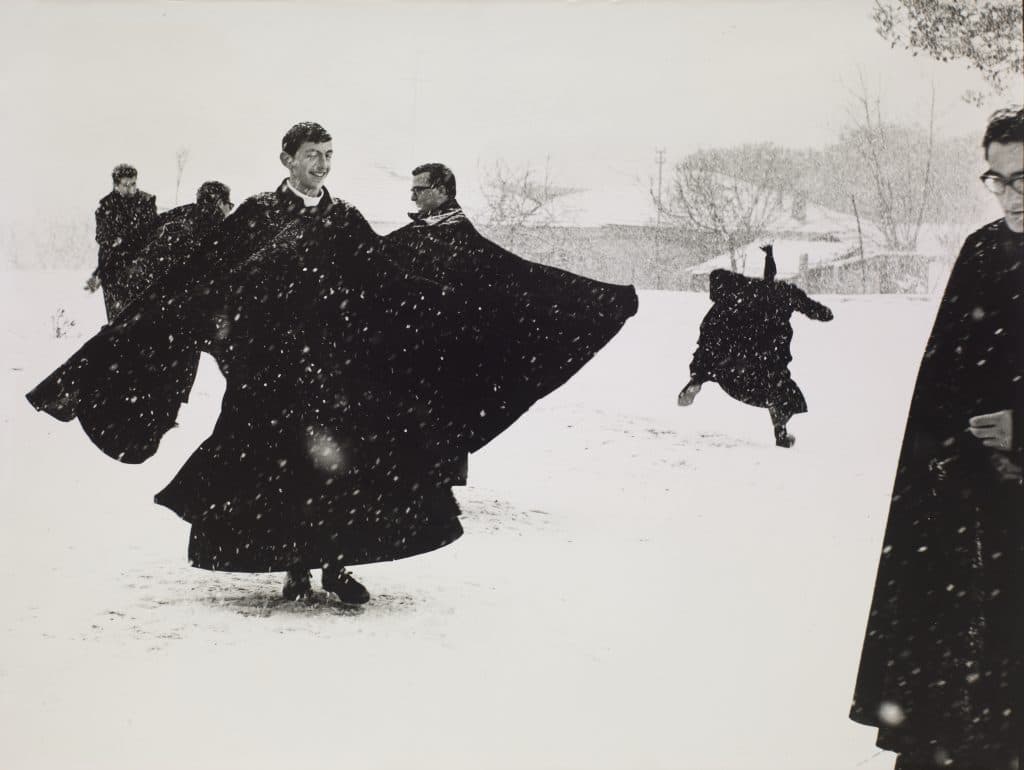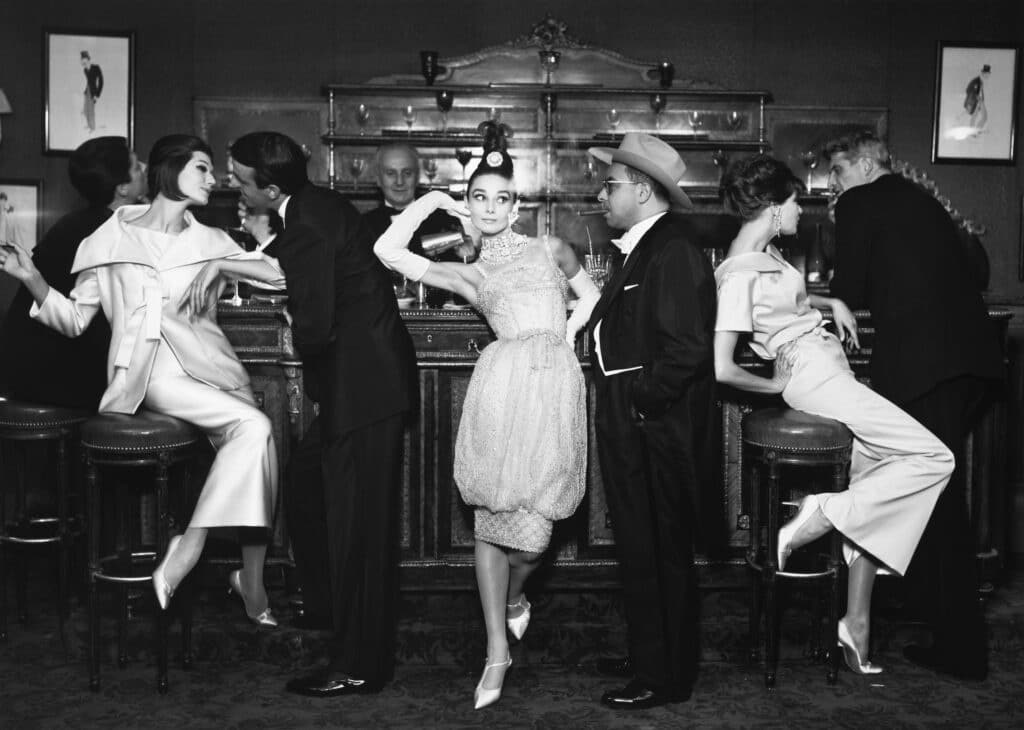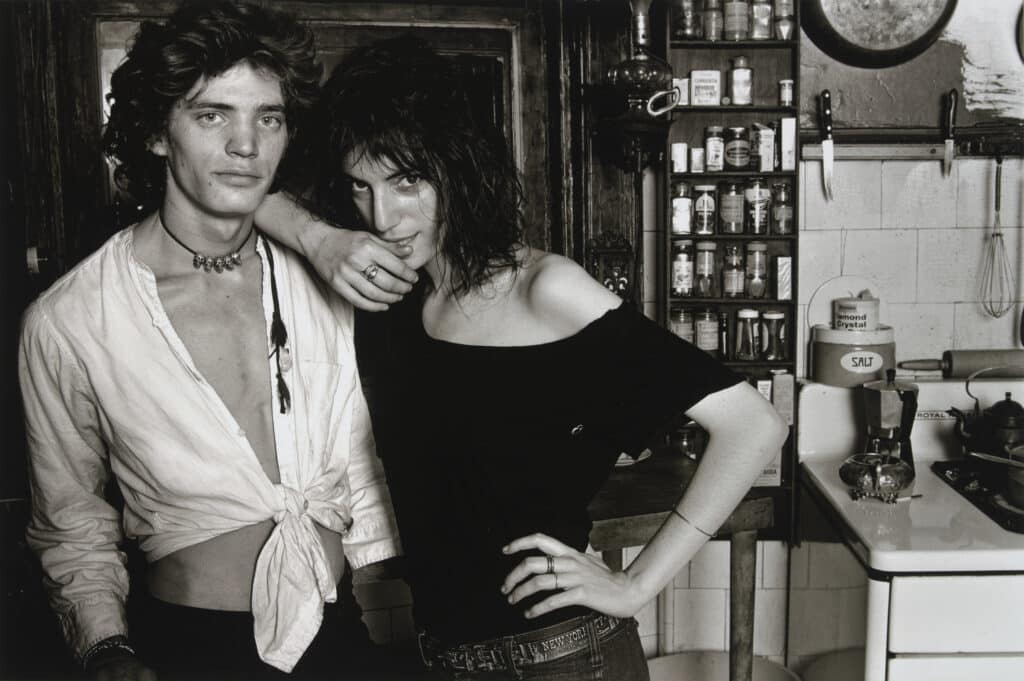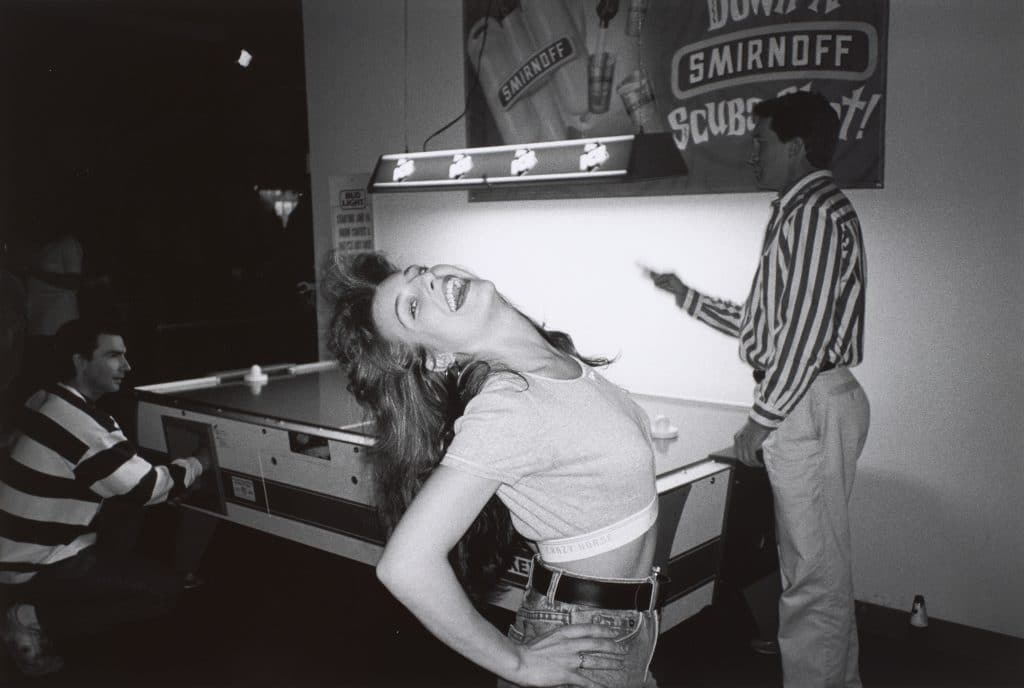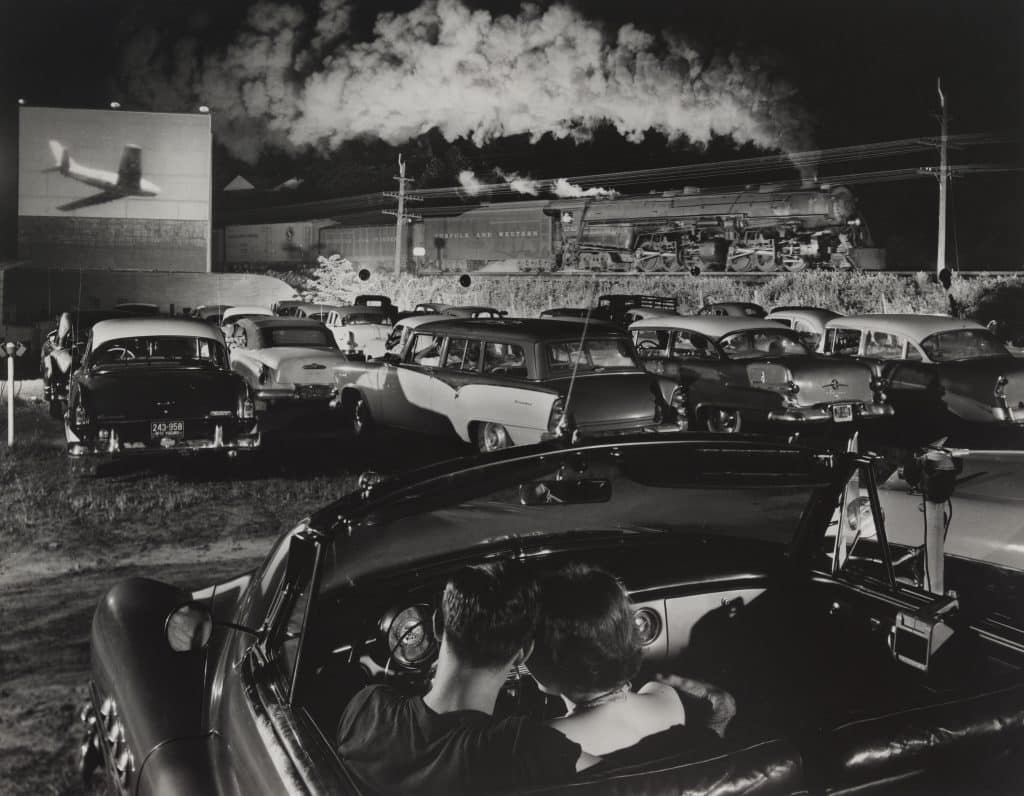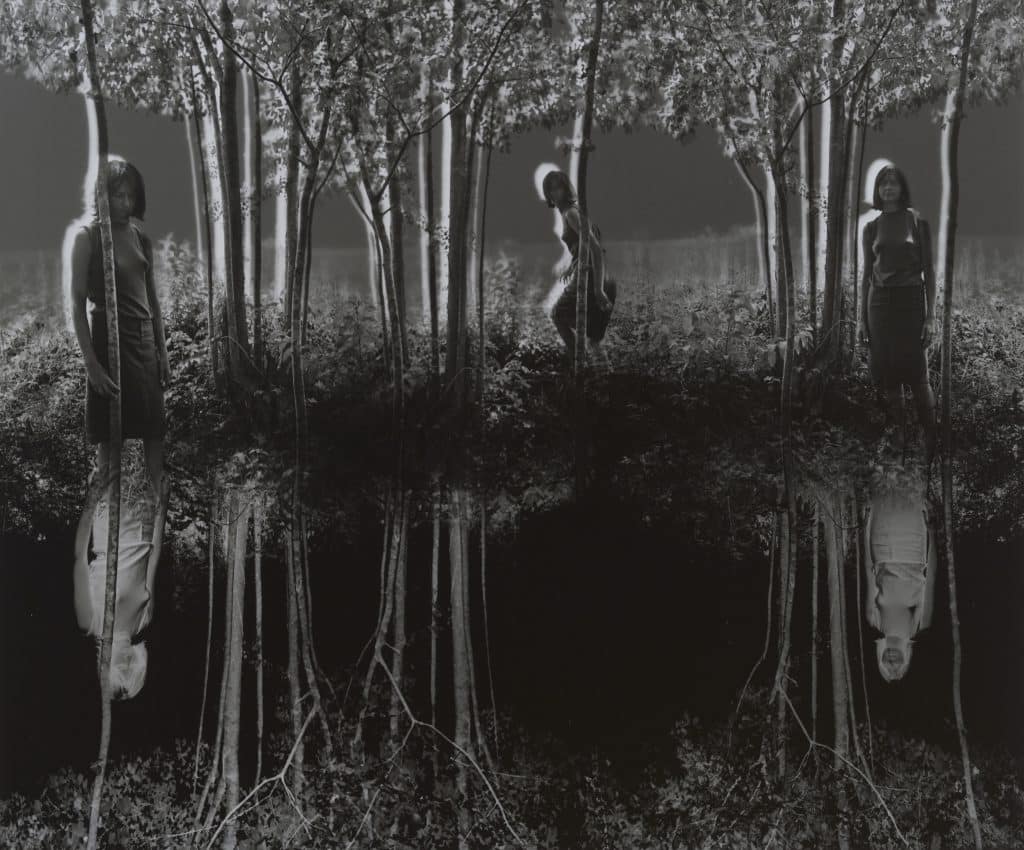How best to give meaning to the word “presence” in a discussion about photography, a word layered with implication and underlying tension? In the case of a dictionary meaning, presence is “something felt or believed to be present,” a perception not unlike the photographs in Presence — The Photography Collection of Judy Glickman Lauder, a book recently published by Aperture.
Lauder’s new bookisa dynamic collection of iconic photographs that exhibits a ferocious, grab-the-bull-by-the-horns intent by a woman with a seasoned eye and the smarts to grab vintage prints by a who’s who of classic photography.
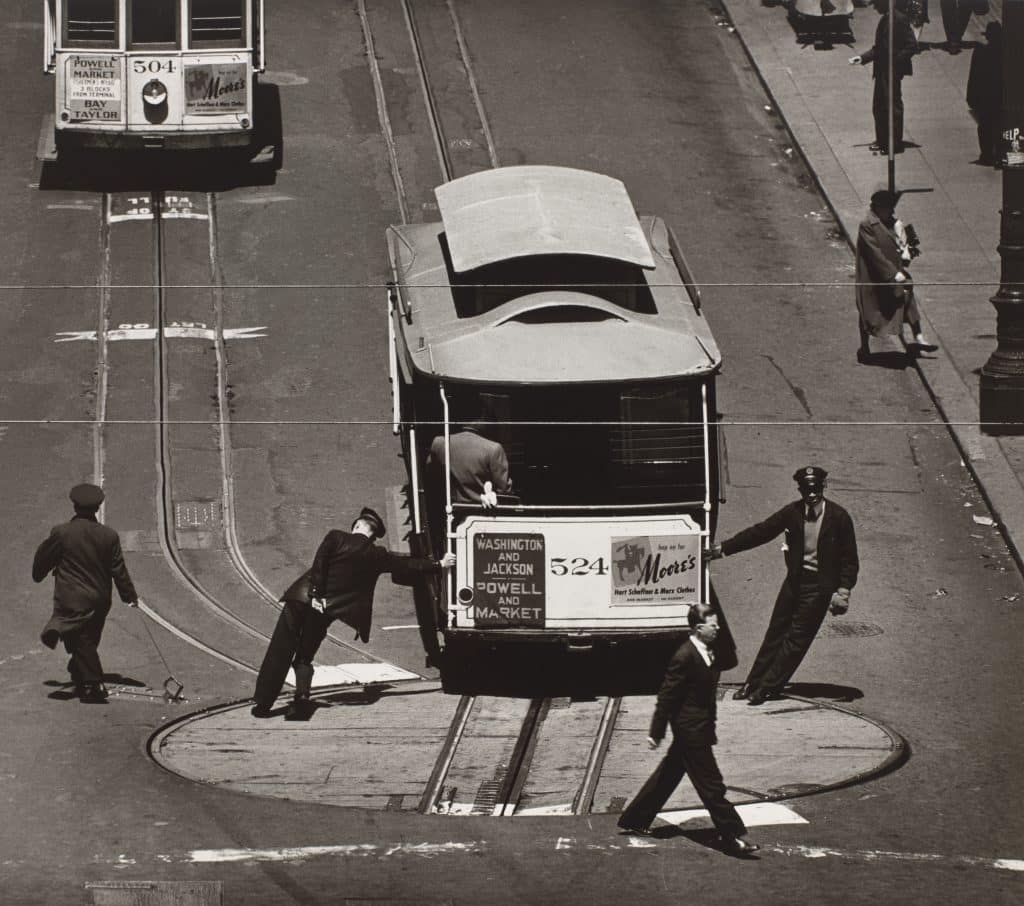
A unique collection
When viewed in context with the title, certain images pop off the page as their presence quickly reveals itself. For example, in Yousuf Karsh’s searing portrait of Winston Churchill, the inherent sense of power in the subject and in the composition takes but an instant to declare its presence in a loud and confident voice.
In the crystal clarity of a large format photograph, Churchill glowers at the camera, intimidating the viewer through his posture, stance, and implied impatience.
What may not be known to the reader, however, is that since Karsh wasn’t getting his subject’s co-operation, he walked over to Churchill and yanked the ever-present cigar from his mouth. Seconds later, when Karsh returned to his position behind the camera, Churchill gave him a gift more precious than gold — a pure, unstudied response full of the towering figure’s frustration that can be described as showcasing an undeniably empathic presence.
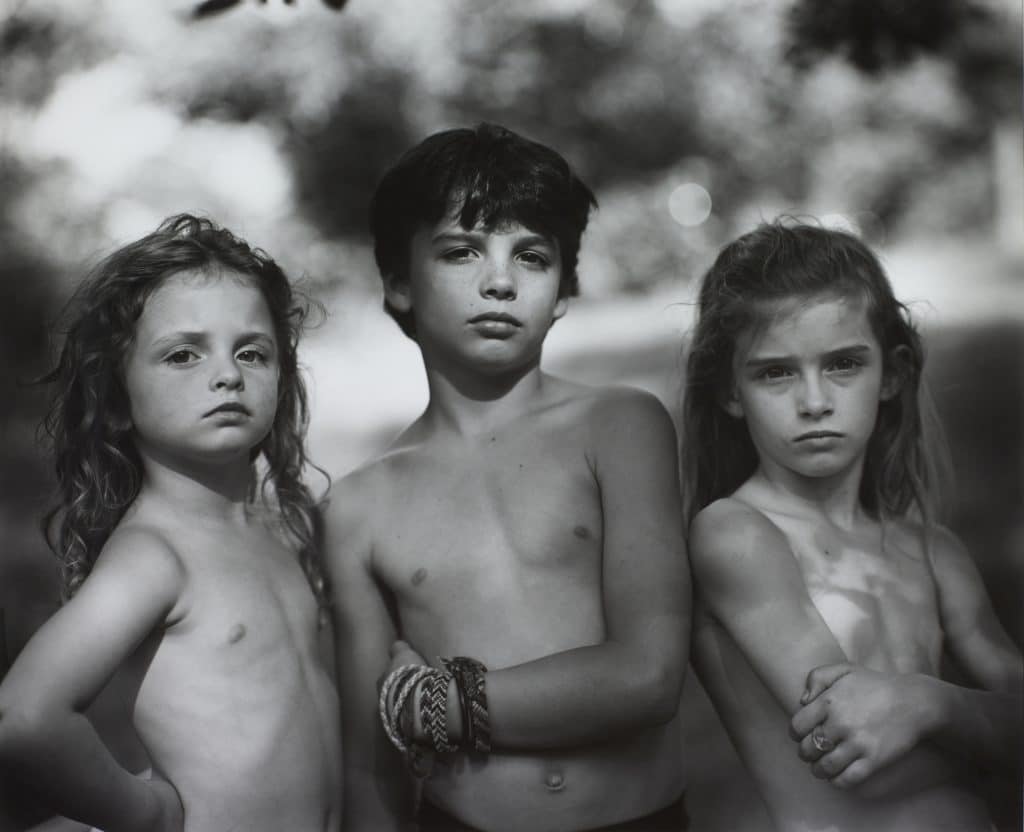
But what then of another use of the word presence, namely Karsh’s own presence of mind? His split-second decision to upend decorum and invade his subject’s space is in many ways the modus operandi evident in Presence.
Calling the book by that name imparts a double sense of meaning: firstly, as a visual cris de Coeur where these images stake their claim in the world by being singular examples of the medium’s power; and secondly, and perhaps more importantly, by giving credence to Judy Ellis Glickman – Lauder’s tested and generous eye, which declares its presence through what it chooses to hone in on. Lauder sensed that in the more than two years spent assembling the book and exhibition, what she ultimately revealed was something the collection told her about herself.
In a compilation that spans nearly a century (and includes pantheon names like Hurrel, Avedon, Cartier-Bresson, Salgado, Parks, and Capa) Lauder, Chris Boot and the team from Aperture, and numerous others have embraced nuance and confident curation to declare that out of 680+ images, these 160+ deserve to be singled out.
Through Lauder’s generosity and desire to share this mini-history of 20th century photography, the book is published in conjunction with an exhibition at the Portland (Maine) Museum of Art, the institution gifted with this nonpareil collection.
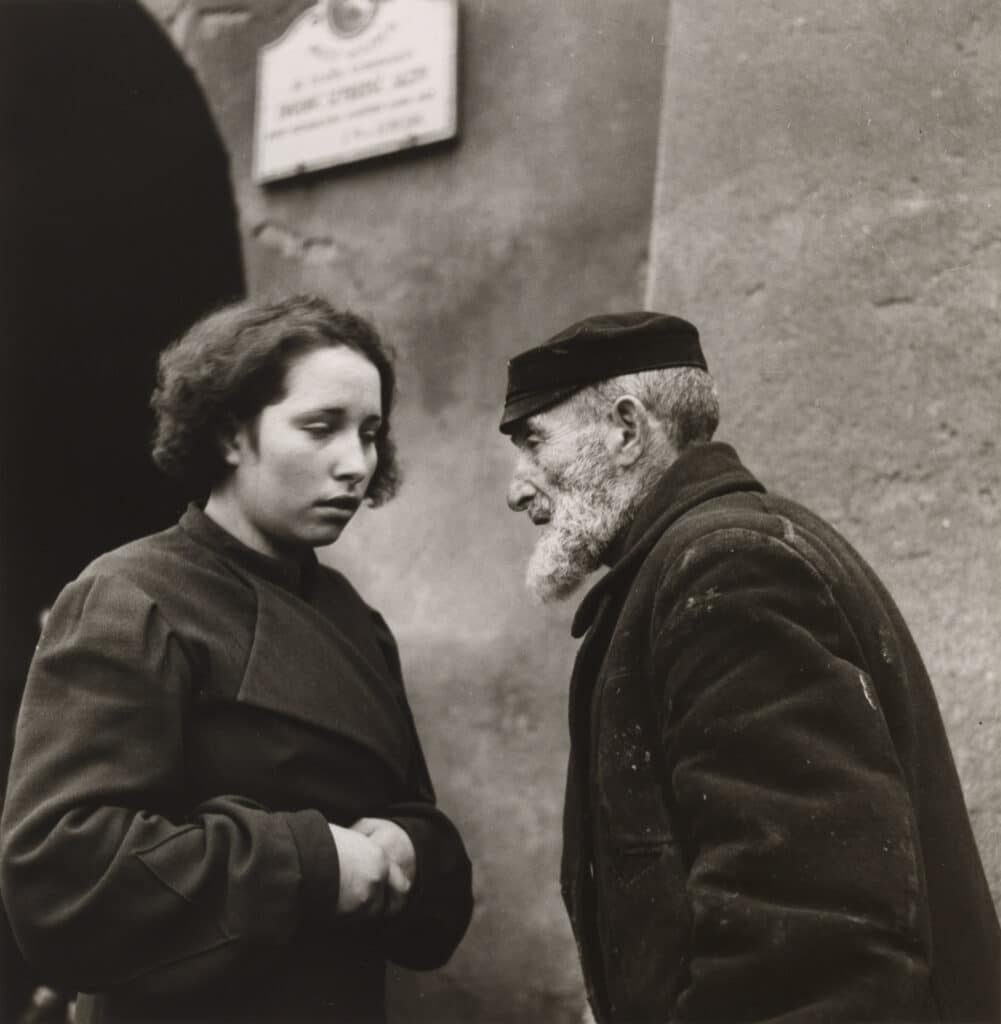
Timeless strength
Beautifully printed by EBS in Verona, several photographs in the book live at the pinnacle of the art and define greatness through the indisputable presence that classic photography achieves.
Just a few of the photos in Presence that exhibit this quality are Edward Weston’s Charis, 1936, Horst P. Horst’s Mainbocher Corset, Paris, 1939, Alfred Stieglitz’s The Hand of Man, 1902 and The Steerage, 1907, W. Eugene Smith’s Welsh Miners, 1950 and Spanish Wake, 1951, Henri Cartier-Bresson’s Madrid, 1939, and Dorothea Lange’s Migrant Mother, Nipoma, California, 1936.
But at this moment — with a frightening increase in anti-Black rhetoric coming at us from multiple directions — photos like Gordon Parks’ American Gothic (Portrait of Ella Watson), Washington, DC, 1942 speak volumes about how photography alone can comment on social mores.
Parks’ relationship with Ms. Watson was unique for its time as they collaborated on an 80+ series of photographs in which the great photographer recorded her at home, at work, at worship, and with family, culminating in the classic image in front of the American flag.
The very presence of a strong, stern-faced Black American woman sharing the foreground with a broom and a mop while backgrounded by the flag of the contiguous United States immediately demands confrontation. Historically, it works to bring the past forcefully to the present. We cannot comfortably look away, knowing how the representational nature of this image evokes burdens we shoulder every day.
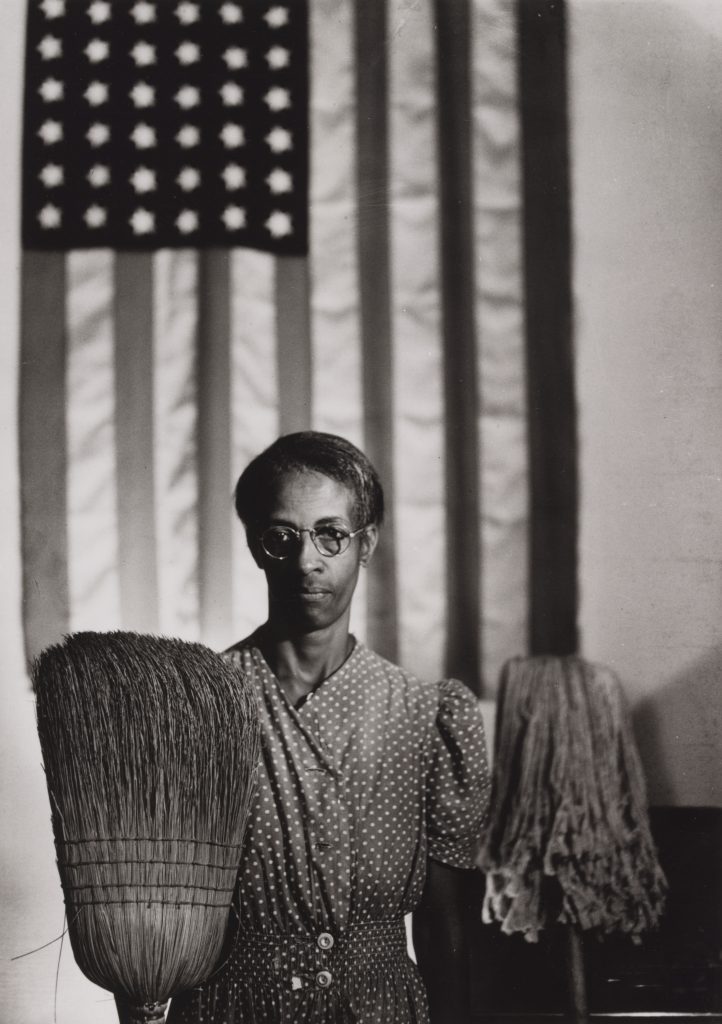
Other prominent images exhibit their presence by evoking different elements of life: joy in Mario Giacomelli’s dream-like display of priests frolicking in the snow; young passion in Leon Levinstein’s Coney Island, c.1952; and the thin line between celebrity and fashion in Richard Avedon’s image of Audrey Hepburn, Art Buchwald, and others at Maxim’s in Paris in 1959.
But two photographs almost scream their presence in markedly different ways: Lisette Model’s Reflections, Rockefeller Center, New York, c.1945 is a stunning translation of one of the silent gifts of photography, namely the implied presence of human spirits as reflected in windows; and the forceful gaze of a proud young woman in Edouard Boubat’s Lella in Brittany, 1947, an image that combines an almost painterly composition with someone stating their presence through an aura of defiance.
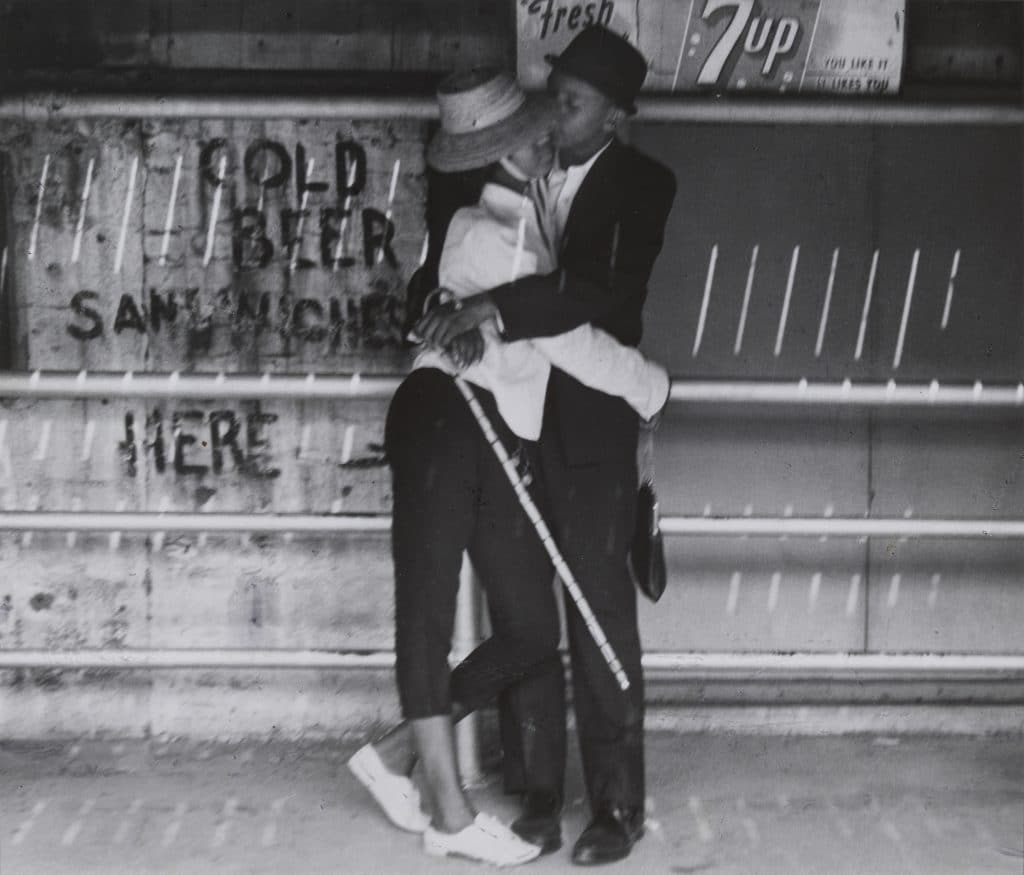
“Every photograph is a certificate of presence”
Roland Barthes’ quote “Every photograph is a certificate of presence” (as included in an essay by Anjuli Lebowitz that opens the book) is an affirmation of the obvious, but nonetheless a necessary and fundamental fact that is irrefutable if one is to define presence as “something felt or believed to be present.”
But for this viewer, what creates a visceral, organic response are images like Susan Meiselas’s Lena on the Bally Box, Essex Junction, Vermont, 1973, where the presence of seven souls in motion outside a strip club are in service to the defiant gaze of the stripper who is almost shouting “I am present, I am here!”, or Mick and Bianca Jagger after Their Wedding, Saint-Tropez, France, May 12, 1971 by Patrick Lichfield, which demands our attention due to the implied and hyper-charged presence of sex, drugs, and rock ‘n roll. With an in-your-face viewpoint, we share in the glorious spectacle of a major rock star and his new bride thanks to the presence of a gifted photographer.
The photographer in Lauder relates to the sterling eye exhibited in so many of these images; she is comfortable being surrounded by great talent because she is one of them. Meanwhile, the collector in Lauder relates to the shared respect for humanity that almost all this work offers.
Judy Ellis Glickman’s collection — like her book — holds a finite world. A collection can be a fluid, malleable thing that bobs and weaves and grows or contracts based on the market or the budgetary constraints of the collector. A book, however, stops its forward trajectory as soon as the ink hits the paper at the printing house but has a staying power unique to its nature that puts it squarely on the side of history.
No matter how many times we may have seen certain images in the collection, or how much we know about some of the subjects, the sheer profundity embedded in many of these deceptively simple photographs can help carry the weight of an entire generation.
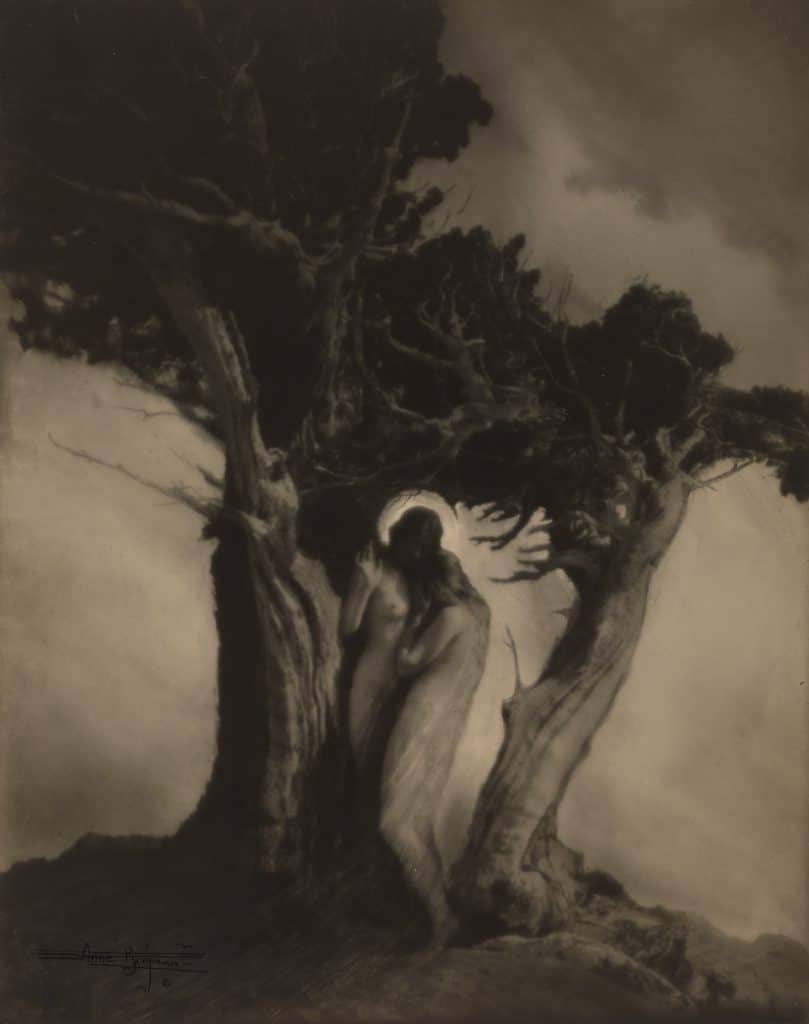
Presence: The Photography Collection of Judy Glickman Lauder, published by Aperture and available for $50
